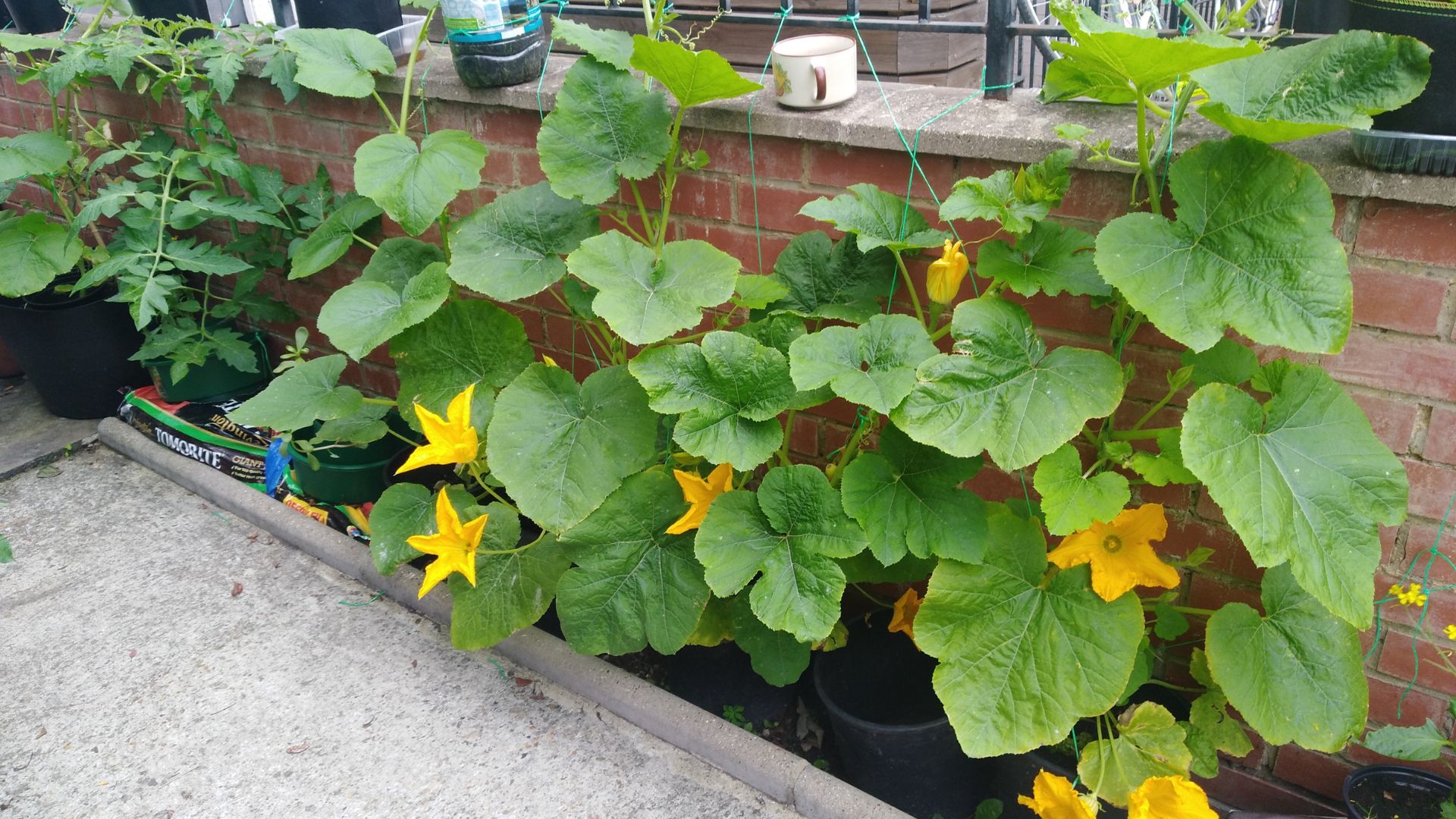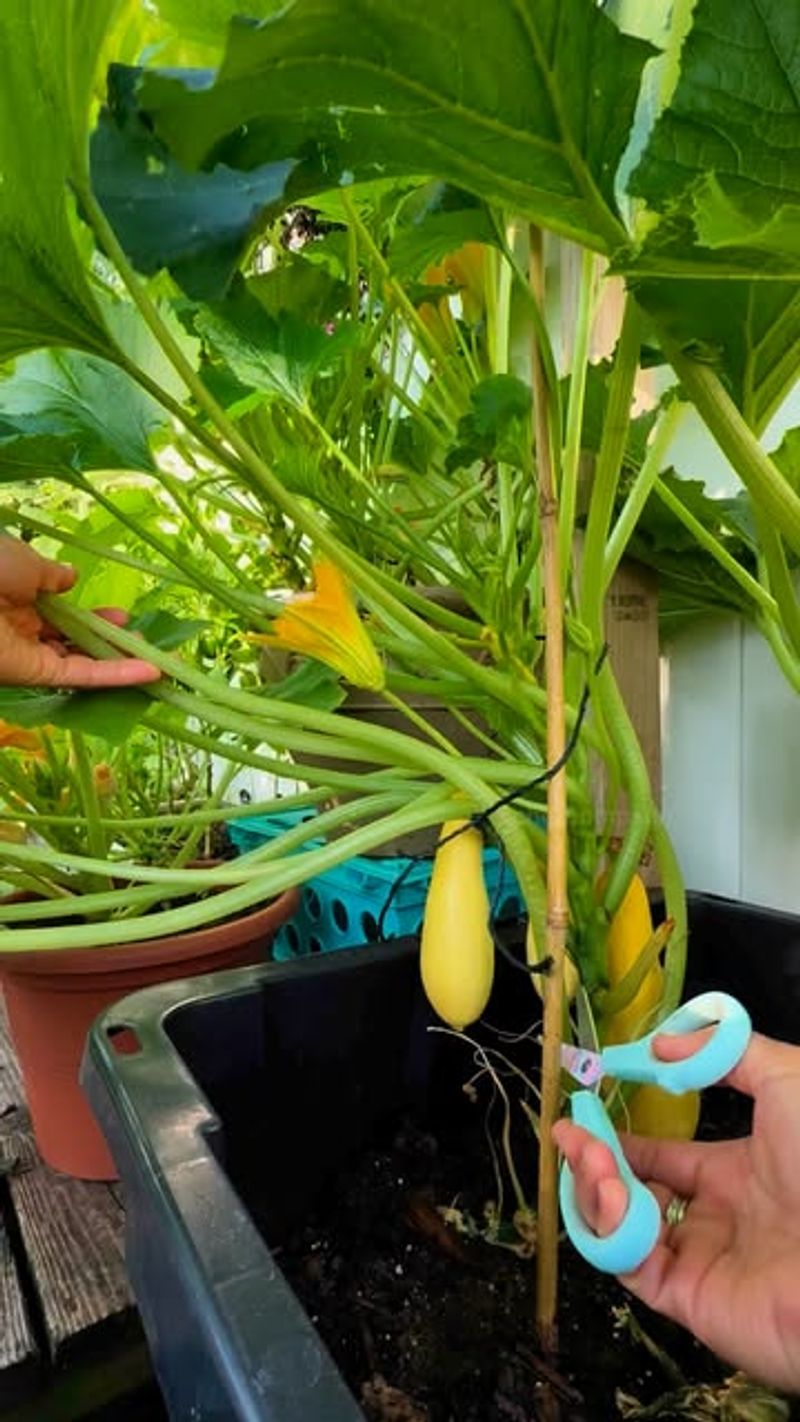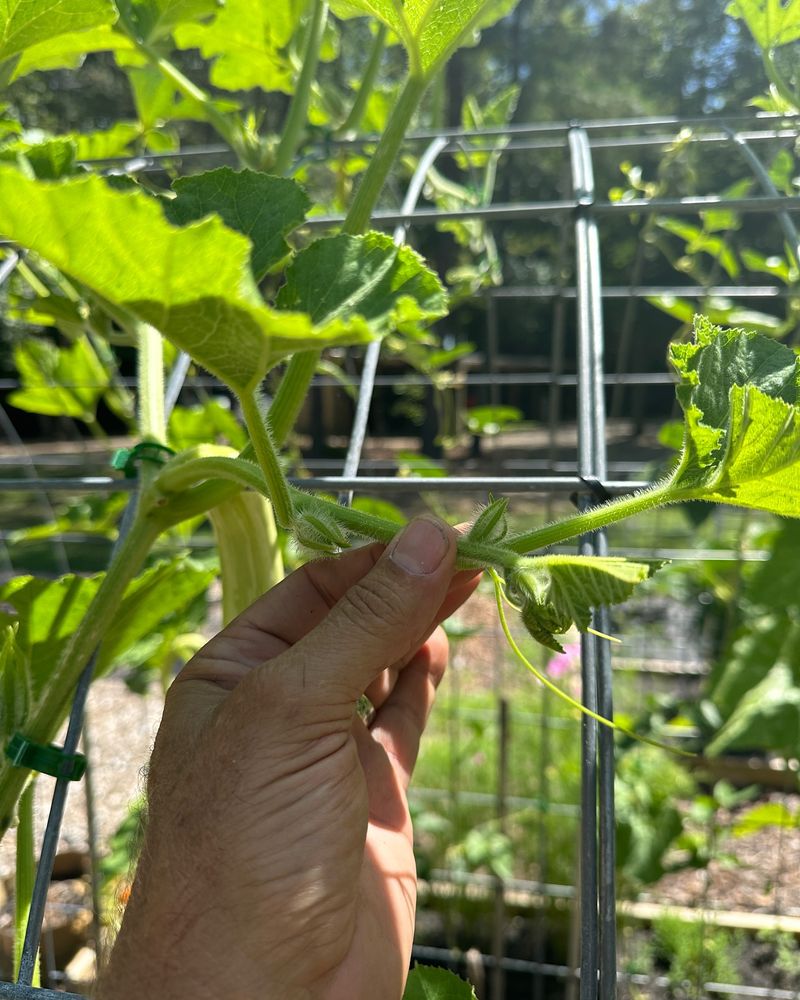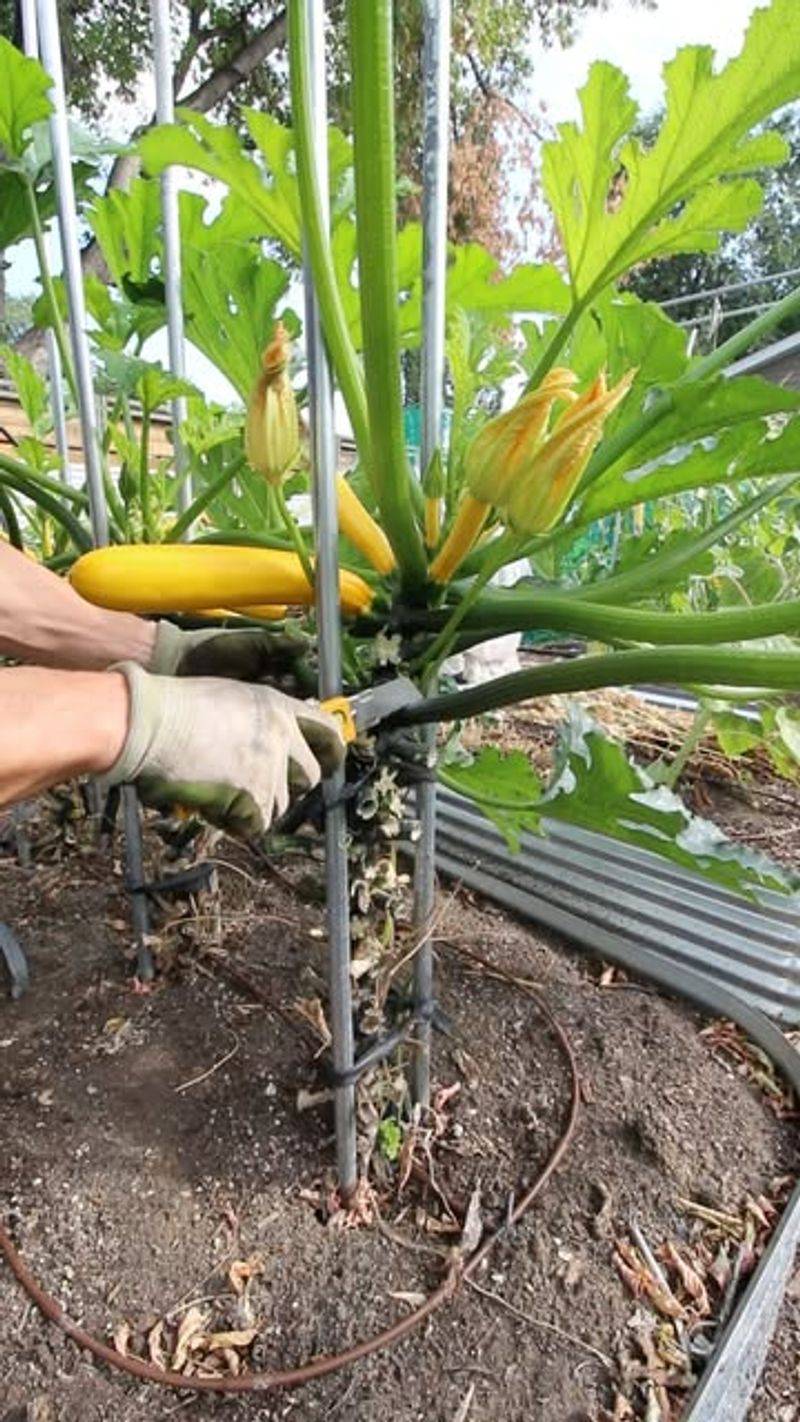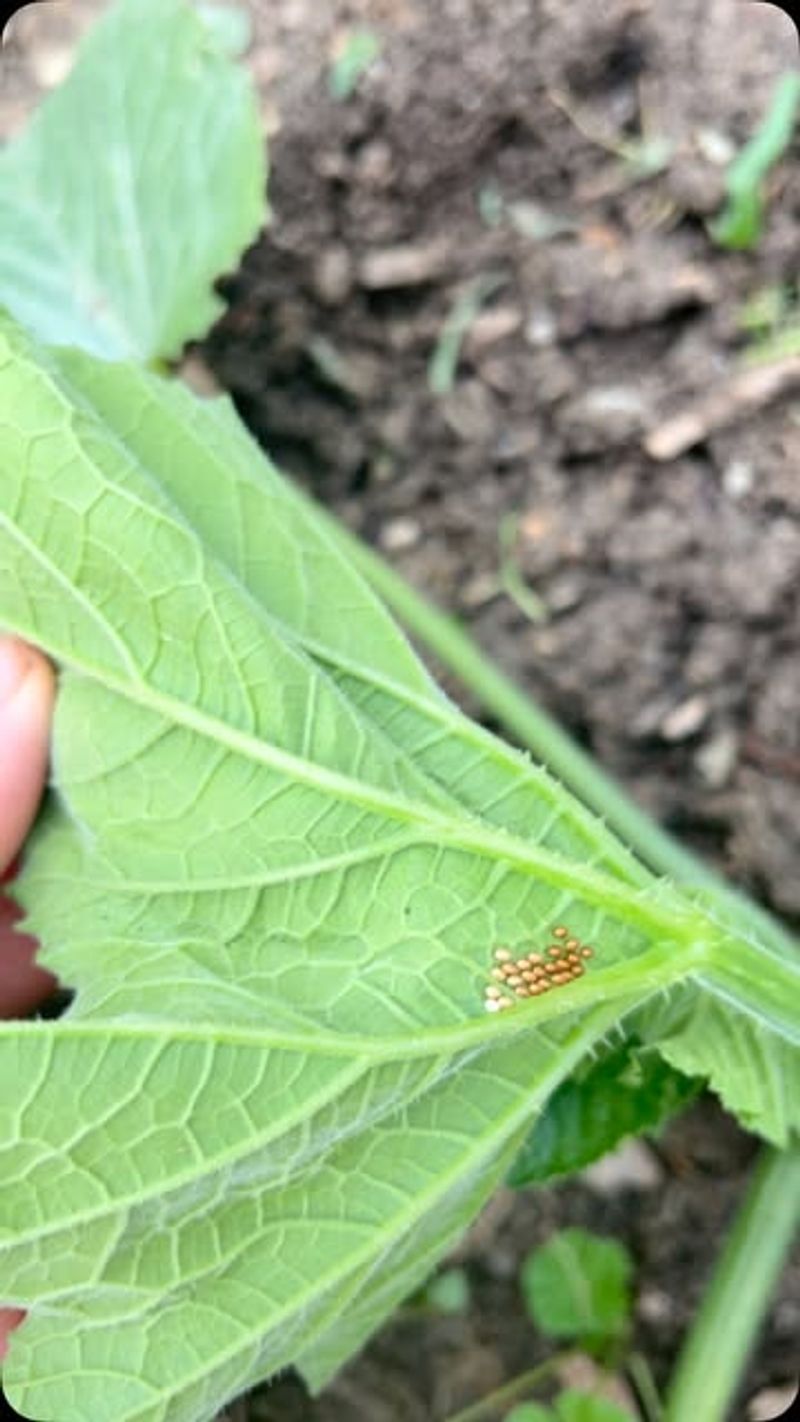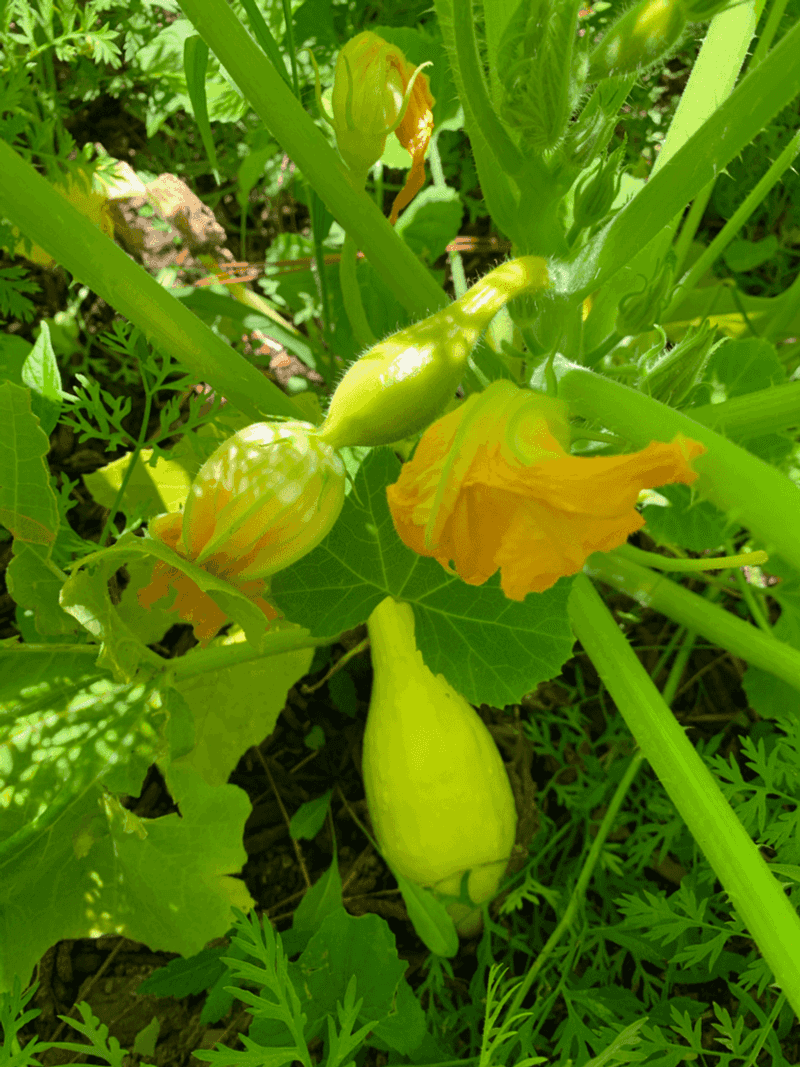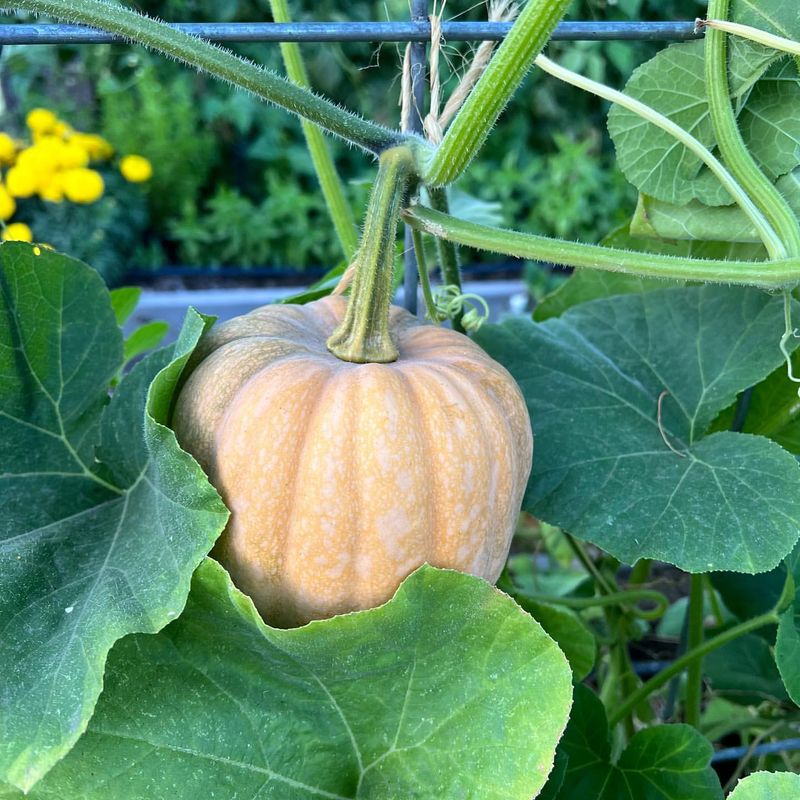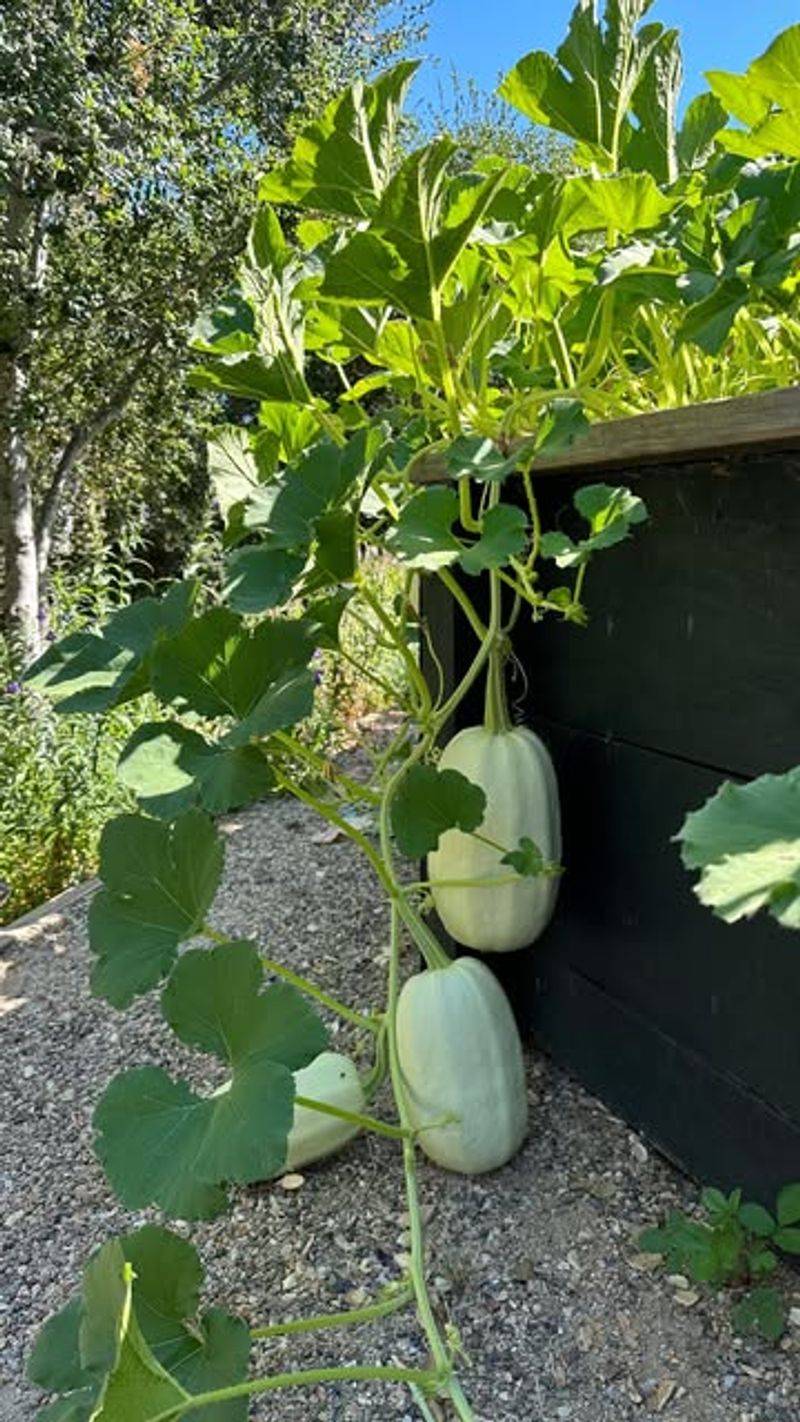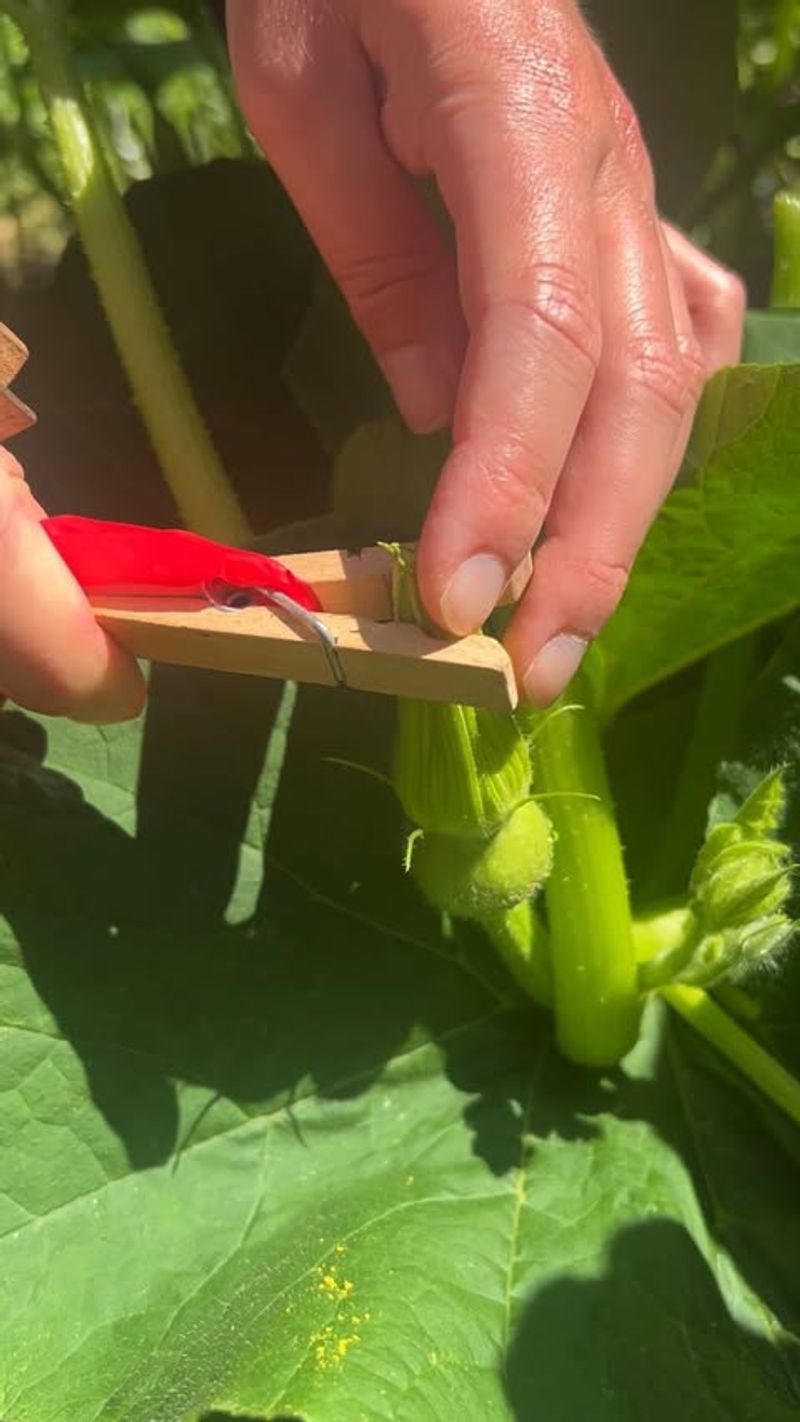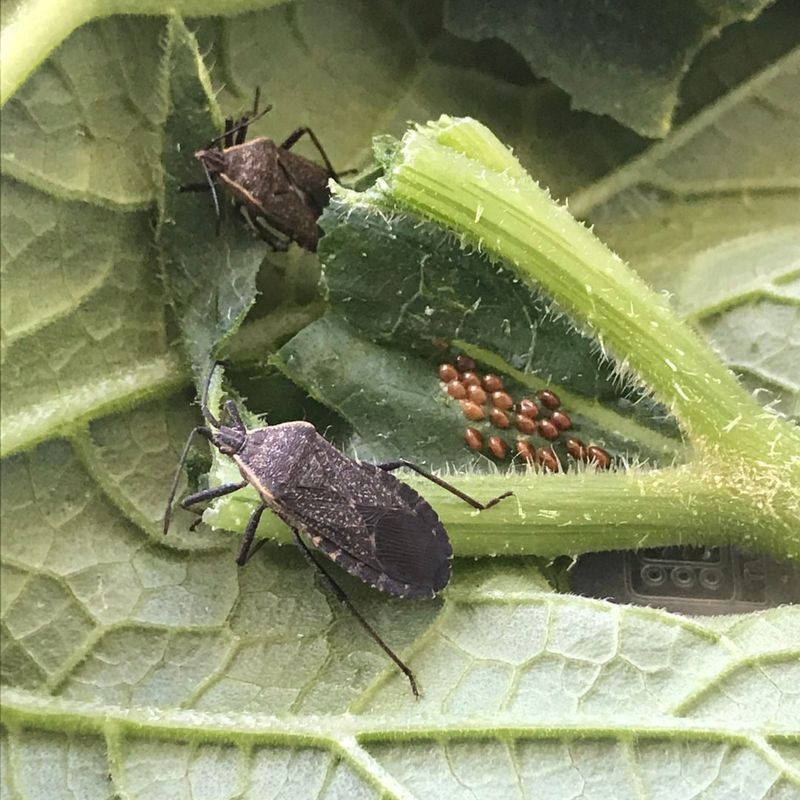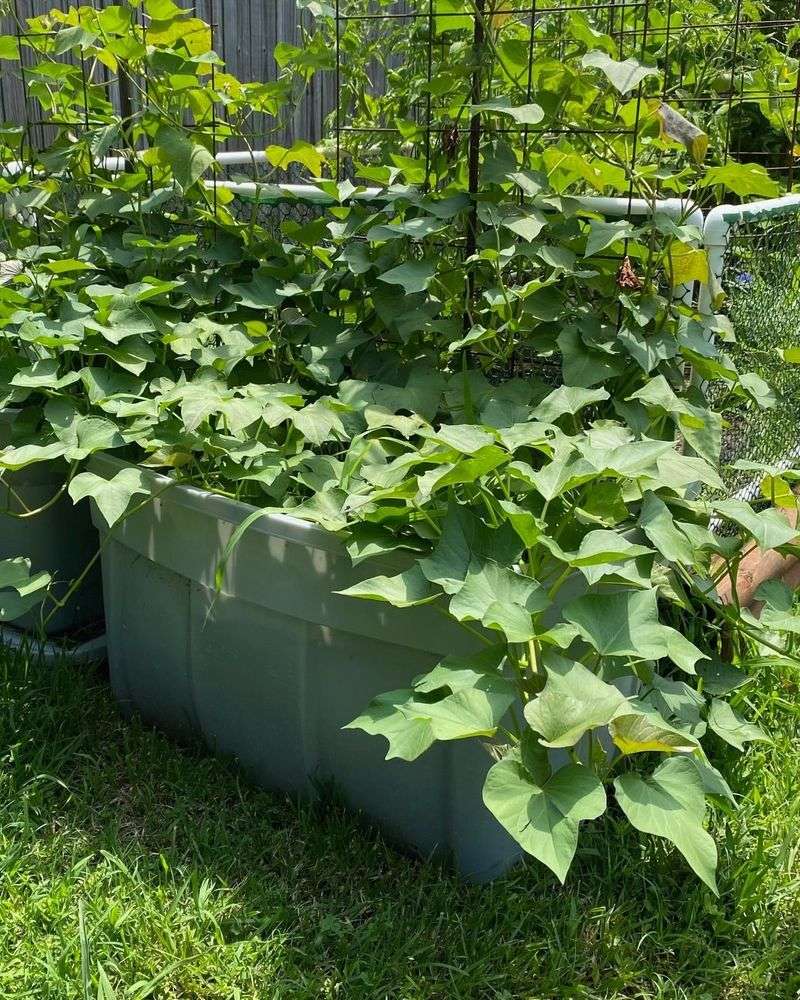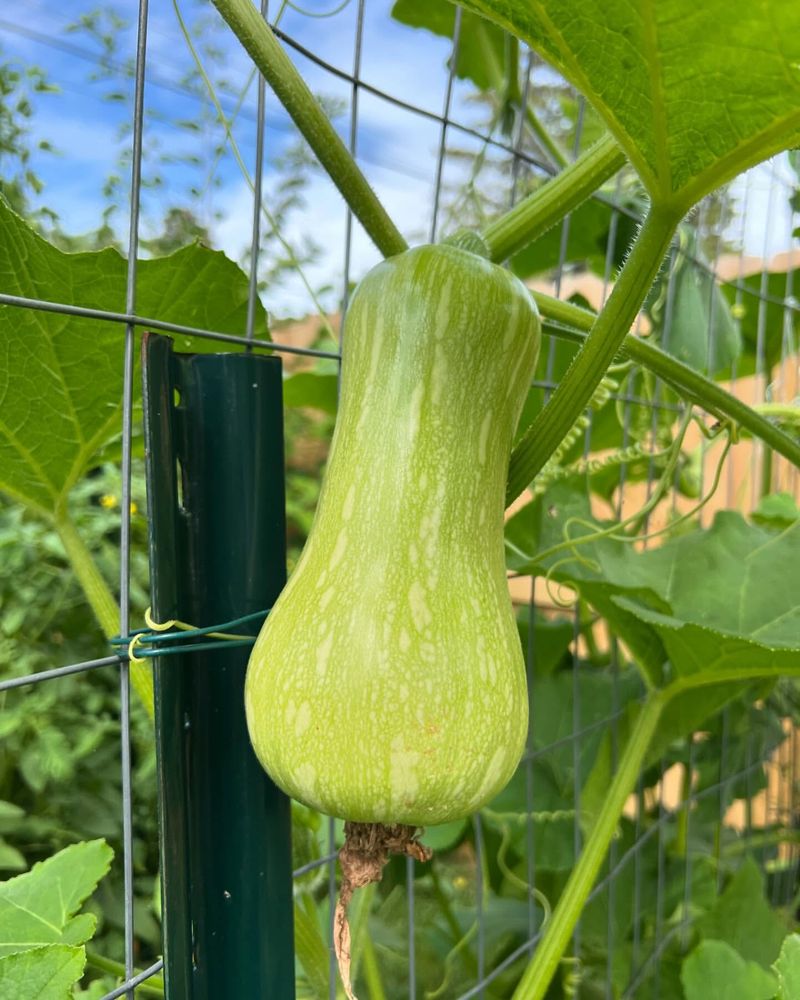Squash vines have a knack for sprawling wildly across garden beds, turning tidy spaces into leafy jungles in no time. Their enormous leaves and fast growth can easily overwhelm nearby plants. It’s no wonder so many gardeners are reaching for the pruning shears this season.
Taming these vegetable giants isn’t just about aesthetics—it’s a smart way to help your plants thrive. Strategic pruning opens up airflow, reduces disease risk, and directs energy toward fruit production. Think of it as giving your squash a purposeful makeover.
A little trim here and there can lead to a bigger, better harvest. With less chaos and more control, you’ll enjoy plumper fruits and a garden that’s easier to manage. Your squash will thank you—with abundance.
1. Maximizing Fruit Production
Removing excess foliage redirects the plant’s energy toward developing bigger, better fruits instead of just growing more leaves. I’ve noticed nearly double the yield in my pruned zucchini plants compared to the unpruned ones.
The plant naturally wants to expand in all directions. Without intervention, you’ll end up with a jungle of leaves but disappointingly few actual squash to harvest.
Most experienced gardeners focus on removing the lower, older leaves first. These typically don’t contribute much to fruit production anyway and often become breeding grounds for problems.
2. Preventing Powdery Mildew
Pruning creates better air circulation around your plants, which helps keep leaves dry. Moist, crowded conditions are exactly what powdery mildew spores are looking for when they settle on your squash.
Last season I lost half my butternut crop because I didn’t prune early enough. The telltale white powder appeared overnight and spread like wildfire through the dense foliage.
Regular removal of a few strategic leaves can mean the difference between a healthy harvest and a disappointing, disease-ridden patch that produces nothing worth eating.
3. Controlling Vine Length
Winter squash vines can grow an astonishing 15-20 feet if left unchecked! Trimming those runners keeps your garden pathways clear and prevents plants from escaping their designated areas.
My neighbor swears by the “pinch at five leaves” method for her zucchini. She lets each vine grow just five leaves past a forming fruit, then pinches off the growing tip.
Without regular pruning, you might find vines sneaking under fences, climbing up other plants, or creating impenetrable tangles that make harvesting nearly impossible.
4. Spotting Pests Earlier
Dense foliage provides the perfect hiding spot for squash bugs, vine borers, and cucumber beetles. Thinning leaves makes it easier to inspect your plants regularly and catch infestations before they become devastating.
The underside of squash leaves is particularly attractive to egg-laying insects. With fewer leaves to check, you’re more likely to notice and remove those telltale egg clusters before they hatch.
I check my plants every three days after pruning, something that would take hours if I left all the original foliage intact.
5. Improving Pollination Rates
Excessive foliage can hide flowers from pollinators or make it difficult for them to navigate to each blossom. Removing some leaves exposes more flowers to visiting bees and butterflies.
Female squash flowers only remain receptive for about 24 hours. If pollinators can’t find them during that brief window, you’ll end up with lots of dropped or deformed fruits.
When I started pruning specifically to expose flowers, my hand-pollination needs dropped dramatically as nature’s helpers could finally do their job properly.
6. Reducing Humidity Hotspots
The large leaves of squash plants trap moisture underneath, creating perfect conditions for fungal diseases to develop. Strategic pruning eliminates these humidity pockets before they cause problems.
Morning dew can take hours longer to evaporate in unpruned squash patches. By midday, those persistently wet leaves become prime targets for various leaf spot diseases and rot issues.
Gardeners in particularly humid climates find this benefit especially valuable. What works in arid Arizona won’t necessarily succeed in muggy Florida without proper airflow management.
7. Focusing Energy On Developing Fruits
Plants have limited resources to distribute. By removing some leaves and secondary vines, you’re telling the plant to invest in ripening existing fruits rather than continual expansion.
The difference becomes especially noticeable late in the season. Pruned plants often produce mature fruits several days earlier than their unpruned counterparts – crucial timing before frost arrives.
For gardeners with shorter growing seasons, this timing advantage can determine whether winter squash fully ripens or remains underdeveloped and unsuitable for storage.
8. Making Harvesting Easier
Reaching through a tangle of spiky squash stems and scratchy leaves to find ripe fruits can be genuinely painful! Selective pruning creates clear access paths to developing fruits.
The prickly nature of squash stems has left many gardeners with irritated skin or even tiny splinters. Removing unnecessary growth minimizes these unpleasant encounters during harvest time.
My elderly father-in-law returned to gardening after I showed him how pruning could make his favorite zucchini accessible without the backache and scratched arms he remembered.
9. Preventing Ground Rot
When fruits develop in direct contact with damp soil, they often develop soft spots or begin rotting before harvest. Pruning lower leaves and providing better airflow reduces this common problem significantly.
Gardeners sometimes place boards or straw under developing fruits as barriers. While helpful, these methods work even better when combined with proper pruning to improve overall plant health.
The difference becomes most apparent during rainy periods. Properly pruned plants might lose a fruit or two, while unpruned patches can see widespread losses to soil-borne pathogens.
10. Extending Harvest Season
Removing end portions of vines about a month before your first frost date forces the plant to mature existing fruits rather than starting new ones that won’t have time to develop.
I learned this technique from an old farmer who consistently had ripe butternut squash weeks before anyone else in our community garden. The secret was his aggressive late-summer pruning regimen.
Plants with too many developing fruits often fail to fully ripen any of them before cold weather arrives. Pruning helps ensure you’ll have mature, storable squash rather than a disappointing harvest of underdeveloped fruits.
11. Saving Garden Space
Trained and pruned squash plants can grow vertically on trellises or in much smaller footprints than their wild, sprawling relatives. This space-saving approach makes squash viable even in tiny gardens.
The key is removing side shoots and focusing growth on one or two main stems. Without this intervention, even a single plant can easily consume 30+ square feet of garden real estate.
Urban gardeners particularly appreciate this benefit. One well-pruned zucchini in a container can produce nearly as much as an unpruned plant while taking up a fraction of the space.
12. Preventing Cross-Pollination
Gardeners growing multiple squash varieties for seed saving often prune to create physical distance between different types. This reduces the chance of cross-pollination that would result in unpredictable offspring.
The practice becomes especially important when growing both summer and winter squash in the same garden. Without intervention, your carefully selected heirloom varieties might not breed true next year.
Combined with hand-pollination techniques, strategic pruning gives seed savers much greater control over their genetic lines and future harvests.
13. Reducing Pest Habitats
Squash bugs and vine borers prefer the protection of dense, overgrown plants. Regular pruning eliminates their favorite hiding spots and egg-laying locations, making your garden less hospitable to these destructive pests.
The base of squash plants is particularly attractive to borers. Keeping this area clean and well-pruned significantly reduces infestation rates compared to allowing leaf litter to accumulate.
After losing entire plants to borers three years in a row, I finally started aggressive pruning. The difference was immediate – I found and squished two egg masses that would have gone unnoticed in my previously overgrown patch.
14. Balancing Nitrogen Uptake
Excessive leafy growth often indicates too much nitrogen and not enough phosphorus and potassium. Pruning helps restore balance by removing nitrogen-hungry foliage so remaining nutrients can support fruit development.
The classic symptoms of nitrogen overload include massive, dark green leaves but few actual fruits. Removing some of this vegetative growth helps redirect the plant’s efforts toward reproduction.
Companion planting with nitrogen-fixing plants works wonderfully, but sometimes requires management through pruning to prevent overly lush foliage at the expense of actual harvest.
15. Preventing Vine Damage
Sprawling vines are easily damaged by foot traffic, animals, or equipment. Pruning and training vines keeps them safely contained where they won’t be accidentally stepped on or run over by lawnmowers.
The stem of a squash plant contains vital transport vessels. Even minor damage from being crushed underfoot can reduce water and nutrient flow to developing fruits.
I’ve watched frustrated neighbors accidentally destroy their own plants while trying to navigate overgrown gardens. A little preventative pruning saves both the plants and the gardener’s patience.
16. Maintaining Garden Aesthetics
Let’s be honest – unpruned squash plants can look like green monsters taking over your carefully planned garden! Regular pruning keeps everything looking intentional rather than neglected.
The contrast between a well-maintained squash patch and an overgrown one is striking. Visitors to my garden often comment on how “organized” my vegetable beds look, not realizing it’s mostly due to consistent pruning.
For front yard vegetable gardeners, this aesthetic benefit helps keep neighbors happy and might even inspire others to try growing food in visible spaces.

